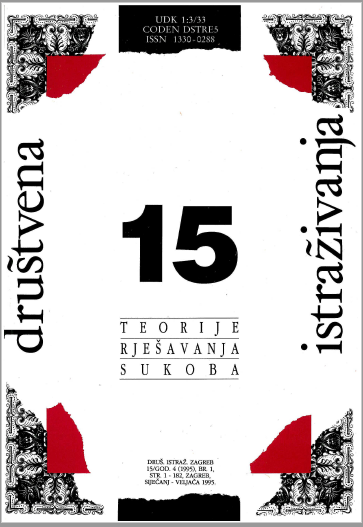MODEL SLUČAJA (KONTINGENCIJE) I POJAM SUKLADNOSTI (KOMPLEMENTARNOSTI) U UPRAVLJANJU I RAZRJEŠAVANJU SUKOBA
THE CONTINGENCY MODEL AND THE CONCEPT OF COMPLEMENTARITY IN MANAGING AND RESOLVING CONFLICTS
Author(s): Gavin BeckettContributor(s): Saša Poljanec Borić (Translator)
Subject(s): Evaluation research, Peace and Conflict Studies
Published by: Institut društvenih znanosti Ivo Pilar
Keywords: Conflict; Resolving conflicts; The contingency model;
Summary/Abstract: ln managing and resolving international conflicts there are a great many theoretical approaches. As these conflicts are complex processes with many factors concerned, different approaches are often used in their analyses. One of the more recent theoretical models is Ronald Flsher's and Loraleigh Keashly's contingency and complementarity model. They analyze the conflict and its resolution through its structural and political features, on the one hand, and psychological content, on the other, at the same time also using complementary methodologies. This theoretical model initially analyzes the nature of the conflict itself, differentiates four phases of conflict, each of which has certain characteristics and a time sequence of involvement and mediation of a third party in the conflict. A critical observation of this model would primarily referto its non-flexibility, Le. its prediction of specific types of involvement in specific phases of the conflict, offering thus a rigid recipe for resolving the conflict, which could not stand the test of critical verification in practice. Secondly, the assumption that the conflicting parties are autonomous and unique factors often has no foundation in practice: and finally, this model would be difficult to apply to a regional conflict, such as the conflict in Croatia.
Journal: Društvena istraživanja - Časopis za opća društvena pitanja
- Issue Year: 4/1995
- Issue No: 15
- Page Range: 37-47
- Page Count: 11
- Language: Croatian

